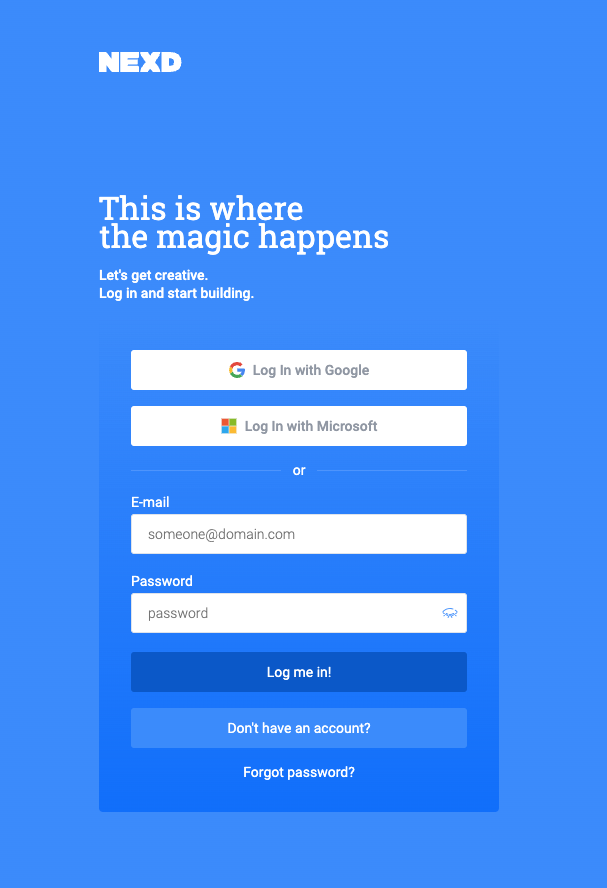Infeed Advertising: Introduction and Examples
Digital marketing is filled with various abbreviations, keywords and other jargon. Sometimes it’s difficult to know the difference between two things with similar names.
This article will tell you all about infeed advertising and ads, what are the common points of confusion between ad types and offer you some great examples for ad inspiration.
What is infeed advertising?
Infeed advertising refers to ads placed within the flow of content on a website or platform, such as within a news feed or among articles, designed to mimic the look and feel of the surrounding content for a more seamless user experience. Creative management platforms help you create amazing ads for your infeed advertising needs.
It is not the same as traditional display ads that appear in designated ad spaces outside the content area, nor is it manually curated ad placements, as its process is highly automated and data-driven.

What are infeed video ads?
Infeed video ads are video advertisements that appear within the content stream or feed of a website or app, such as between posts on social media or articles on a news site, designed to play automatically as users scroll through content.
These ads aim to blend with the native content to provide a less intrusive advertising experience, often starting without sound and requiring user interaction for sound or full playback. Unlike pre-roll or interstitial video ads, infeed video ads integrate directly into the user’s content feed, making them part of the browsing experience rather than separate, interruptive elements.

What is infeed native advertising?
Infeed native advertising is a subset of infeed advertising, specifically designed to match the look, feel, and function of the media format in which they appear. This makes them less distinguishable from the organic content surrounding them. These ads are seamlessly integrated into a platform’s content feed, such as articles on a news site or posts in a social media feed, and are often labeled with terms like “sponsored” or “promoted” to show transparency that it is indeed a form of advertising.
Infeed native ads go further by closely imitating the editorial content in style, tone, and topic, offering a more coherent and less disruptive user experience. However, it can also bring disappointment when the user understands the content is focusing on a specific brand rather than just providing educational content.
What is the difference between instream and infeed?
Now we are entering the territory of similar sounding but completely different advertising types.
Instream ads refer to advertisements placed within the content of videos, typically before (pre-roll), during (mid-roll), or after (post-roll) the video content, requiring the viewer to watch or interact with the ad to continue viewing their intended content. These ads are prominent on video platforms, such as YouTube and are designed to capture the full attention of the viewer.
On the other hand, infeed ads, including infeed video ads, are integrated into a website or app’s content stream, such as a news feed or social media timeline, and are meant to blend in with the content that surrounds them, providing a less disruptive user experience. While instream ads are confined to video content and aim to engage viewers in a captive setting, infeed ads can appear in various formats (text, image, video) and are designed to mimic the look and feel of the native content, encouraging organic engagement without interrupting the content flow.
What is the difference between display ads and infeed ads?
This question was briefly discussed under the first paragraph of this article but this content block will provide more information.
Display ads are a traditional form of online advertising that appear in designated spaces on websites outside of the primary content area, such as banners at the top, sides, or bottom of a webpage. They are designed to stand out from the website’s content, often using eye-catching graphics or animations to attract clicks and are typically placed on a wide range of websites to target specific audiences through ad networks.
In contrast, in-feed ads are seamlessly integrated within the content stream of a website or app, such as a news feed or social media timeline.

They’re designed to mimic the appearance and context of the surrounding content for a more native and less intrusive user experience, while still not being actual native ads.
The benefits of infeed advertising
- Higher Engagement Rates: Infeed ads, both image and video formats, are designed to blend seamlessly with the content that users are already interested in, leading to higher engagement
- Improved User Experience: Since infeed ads are less intrusive and mimic the look and feel of the surrounding content, they contribute to a more pleasant and cohesive browsing experience,
- Enhanced Mobile Compatibility: Infeed ads are naturally suited for mobile platforms, where users are scrolling through feeds. They adapt to different screen sizes and orientations more fluidly than display ads, which might not always render well on mobile devices.
- Greater Creative Freedom: The format of infeed ads, especially video, allows for more creative and engaging storytelling, enabling brands to connect with their audience in a more meaningful way
- Subtler Advertising: Infeed ads offer a subtler approach to advertising, allowing brands to promote their products or services without overwhelming the audience, thereby fostering a more positive perception of the ad content.
Examples of great infeed ads
Below you will find some great examples of well-executed infeed advertising. Additionally, if you wish to browse more ads and ad types, check out our Ad Gallery.
In conclusion on the infeed advertising, it’s clear that this advertising method offers a seamless, engaging, and less intrusive way for brands to connect with their audience within the digital content they consume. By mimicking the look and feel of native content, infeed ads, whether image or video, not only enhance the user experience but also lead to higher engagement rates compared to traditional display ads.

Get Started
Sign up to Nexd Campaign Manager for a free 14-day trial and start creating environment-friendly and highly engaging programmatic creatives!
